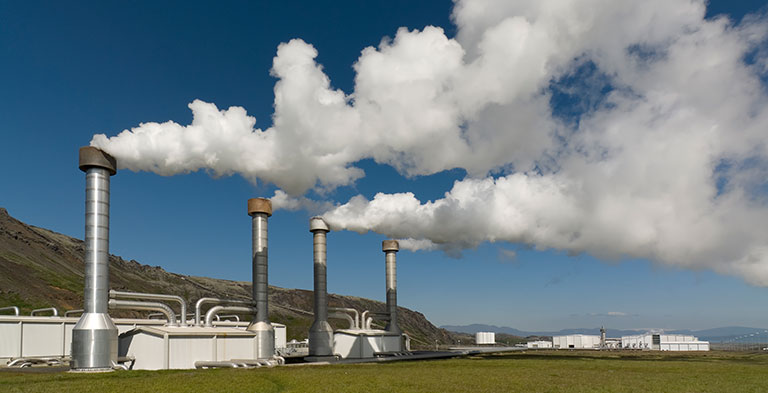Author

On December 8, 2021, the Government of Alberta proclaimed into law the Geothermal Resource Development Act (GRDA). The GRDA establishes a new regulatory framework for the development of geothermal resources in Alberta and grants oversight to the Alberta Energy Regulator (AER). The GRDA provides greater regulatory certainty for potential investors in Alberta’s significant geothermal resources and is an important step towards realizing continued growth across the province’s renewable energy sector.
Following the GRDA’s proclamation, the AER announced in Bulletin 2021-46 that it is working to finalize the province’s regulatory framework for geothermal resource development, including application and technical requirements for project proponents. The AER expects to publish rules, directives and guiding documents to implement the application process in spring 2022.
Brief background on geothermal resources in Alberta
Geothermal energy — thermal energy generated and stored in the earth — is particularly advantageous as a renewable energy source because it can provide constant, predictable baseload power year-round and can be developed using facilities that typically require less surface disturbance, lower carbon footprint and less water consumption than conventional power plants.[1] Alberta is a prime area for the development of geothermal energy, given the abundant geothermal resources identified in the province, combined with Alberta’s extensive experience developing oil and gas resources.
Notwithstanding the tremendous potential for geothermal resources in the province, the lack of a clear and certain regulatory regime has historically stalled development.[2] With the introduction of the GRDA and the planned publication of AER rules, directives and guiding documents, the Government of Alberta aims to eliminate this regulatory and policy gap to provide potential developers with a clear path forward to cultivate the province’s geothermal resources.
New overarching regulatory framework
Until recently, Alberta’s regulatory regime was largely silent with respect to licensing geothermal resource projects. The newly proclaimed GRDA establishes a licensing regime for geothermal resource exploration and development that is modelled after the Oil and Gas Conservation Act. The GRDA also designates the AER as the primary regulator of geothermal resources, as is already the case for Alberta’s oil and gas resources.
With respect to geothermal resources owned by the provincial Crown (which includes most geothermal resources in the province), a developer has to obtain authorization to develop the resource (subsurface rights), pursuant to the Geothermal Resource Tenure Regulation under the Mines and Minerals Act.[3] They must then obtain surface access rights and apply to the AER for wells and facilities licences under the GRDA.
The AER issued additional details regarding the licensing regime under the GRDA in its August 2021 draft directive, Requirements for Geothermal Resource Development.[4] The draft directive sets out proposed requirements regarding a broad range of issues relevant to geothermal projects, such as licence applications, surface rights, consultation and notification, emergency preparedness and response, licence eligibility, licensee assessments to identify risks and liabilities, security deposits and licence transfers, as well as specific technical, application and reporting requirements for geothermal wells, facilities and pipelines.
Other provincial licences and approvals may also be required for geothermal resource projects under the Water Act, the Environmental Protection and Enhancement Act and, with respect to power plants and connections, the Hydro and Electric Energy Act, which is administered by the Alberta Utilities Commission (the AUC).[5] The AUC’s recently amended Rule 007: Applications for Power Plants, Substations, Transmission Lines, Industrial System Designations, Hydro Developments and Gas Utility Pipelines, as its name suggests, sets out detailed application requirements required for power plants, including geothermal plants which fall within the category of “other power plants”.[6] The applicability of these other provincial requirements depend largely on the scale, scope and parameters of a given geothermal resource development.
Next steps
As discussed in Osler’s November 2020 post on Bill 36: The Geothermal Resource Development Act, the GRDA on its own does not address several details regarding how Alberta’s new geothermal framework will be applied. Many of these uncertainties are expected to be addressed by the AER’s forthcoming rules, directives, and guiding documents. Comments on the AER’s draft directive regarding geothermal projects were due in September 2021, and now that the GRDA is in force, the AER is poised to finalize the directive and any associated guidance in the coming months. While the AER is not currently accepting applications for geothermal development, AER Bulletin 2021-46 notably does provide contact information for industry and stakeholders to ask the AER about application submissions, licences and transfers.
For more background on geothermal energy, how it is produced, and the key environmental and regulatory considerations in western Canada, we encourage you to read Osler’s detailed resource published jointly with Matrix Solutions Inc., “Emerging technologies in energy: Environmental and regulatory considerations for Western Canada – Geothermal.”
[1] Osler, Hoskin & Harcourt LLP & Matrix Solutions Inc., “Emerging technologies in energy: Environmental and regulatory considerations for Western Canada – Geothermal”, online.
[2] Canada West Foundation, “Hot Commodity: Geothermal Electricity in Alberta” [PDF], July 2018, p. 16, online.
[3] GRDA, s. 7(2)(b); Geothermal Resource Tenure Regulation, ss. 2–3.
[4] AER, Bulletin 2021-31: Invitation for Feedback on Proposed New Requirements for Geothermal Resource Development [PDF], online; AER, DRAFT Directive XXX: Requirements for Geothermal Resource Development [PDF], online.
[5] Matrix Solutions Inc. & Osler, Hoskin & Harcourt LLP, “Emerging technologies in energy: Environmental and regulatory considerations for Western Canada – Geothermal” at pp. 7–11, online.
[6] Rule 007: Applications for Power Plants, Substations, Transmission Lines, Industrial System Designations, Hydro Developments and Gas Utility Pipelines [PDF] at PDF 44, online.